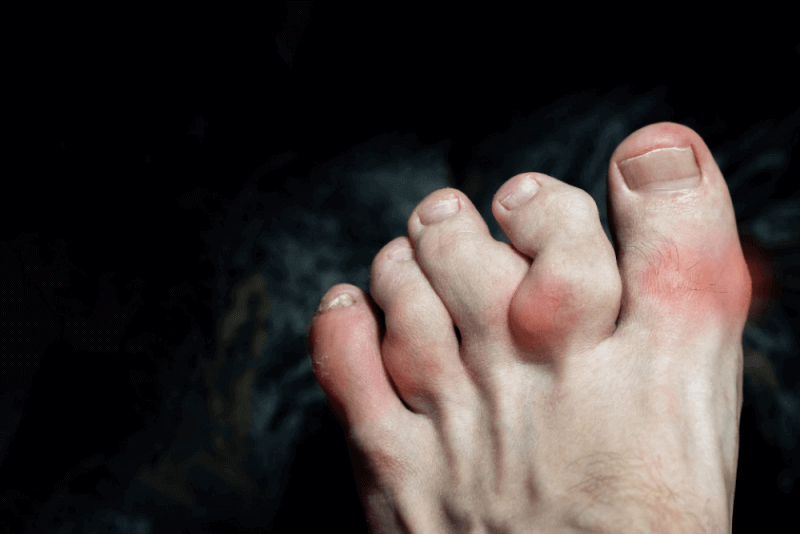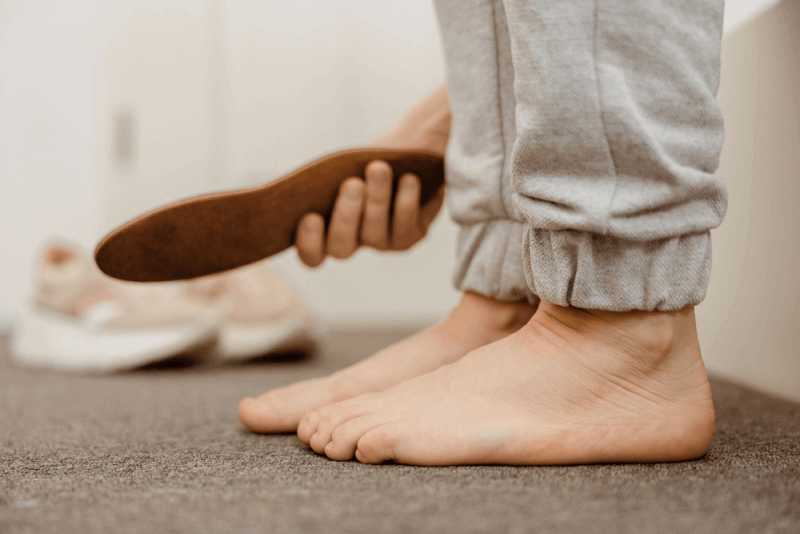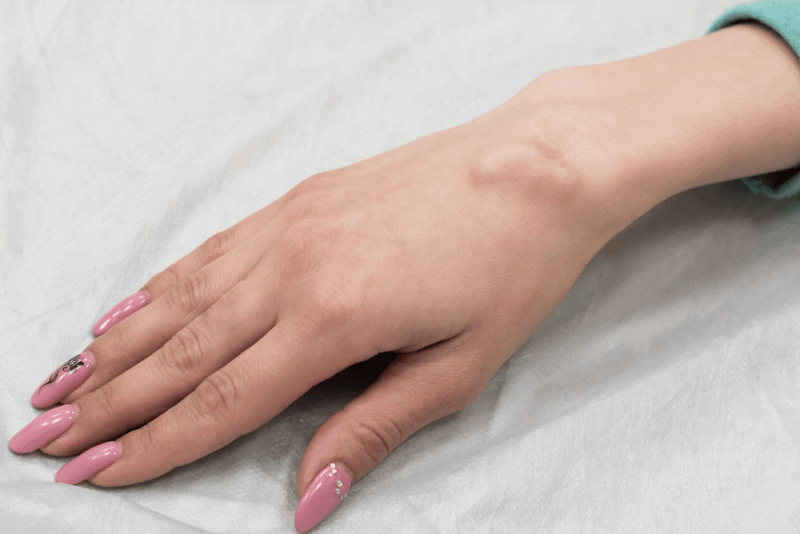What is glass bone disease (Osteogenesis Imperfecta)?
Glass bone disease, which is one of the hereditary diseases seen from birth, is also called OI. OI, also known as brittle bone disease, is a disease characterized by bones breaking easily. Multiple fractures are common and in severe cases, fractures can occur even before birth.
In this disease, which is seen in people who do not produce enough or any type 1 collagen, which is effective in bone formation, the bone structure of the patients is impaired. For this reason, bone fractures can occur during daily activities or even in the absence of any factors.
OI, one of the rarest diseases, occurs in an average of 6-7 people per 100,000 people. OI is a chronic disease. For this reason, patients must live with this disease from birth to death.
Diagnostic criteria for glass bone disease (Osteogenesis Imperfecta)
In order for glass bone patients to be diagnosed, they must first undergo a detailed clinical evaluation. In addition, the patient's history and characteristic symptoms should be evaluated by doctors from various specialties.
Biopsy
In order to identify the collagen abnormalities that cause OI disease, a biopsy sample should be taken and the necessary examinations should be performed under a microscope.
Genetic tests
It is also necessary to identify the mutated gene that causes OI. A blood sample is sufficient for this.
Prenatal tests
Since it is a genetic disease, symptoms can also be observed in the womb, in which case special tests are performed. These tests include the following:
- Ultrasound
- Amniocentesis
- Chorionic villus (CVS)
Ultrasound scans performed before birth can detect fractures or bending of the long bones of babies. In the amniocentesis test, a sample is taken from the fluid surrounding the fetus. In chorionic villus examination, placenta sample is used. These examinations can detect the presence of genetic mutations that can cause OI.
Bone density tests
In order to make a clear diagnosis of glass bone disease, the bones should be examined with X-rays and bone density tests should also be performed.
Symptoms of glass bone disease (Osteogenesis Imperfecta)
The symptoms caused by glass bone disease vary depending on the type of disease and the patient. Some of the symptoms may start in the womb and continue into adolescence. Symptoms that can be seen in OI patients include the following:
- Frequent bone fractures
- Respiratory disorders, including asthma
- Bone deformities
- Tooth and gum problems
- Bone deformity
- Bone pain
- Short length
- Spinal curvatures
- Low bone density
- Loose joints
- Ligament laxity
- Muscle weakness
- Late-closed fontanelles
- Above average head circumference
- Hearing loss starting in the 20s
- Brittle teeth
- Chest wall deformities
- Skin hyperlaxity
- Heart problems
- Fatigue
Causes of glass bone disease (Osteogenesis Imperfecta)
Glass bone disease is a disease caused by the body's inability to produce enough or the right form of type 1 collagen. The reason why the body cannot produce collagen is gene mutations. Gene mutations can occur not only in the baby, but can also be inherited from the mother or father.
Direct inheritance from one parent
In parents with OI, there are 2 genes that ensure collagen production. One of these genes is the mutated gene that causes OI disease, while the other gene is healthy. If this healthy gene in the mother or father is passed on to the child, the child will not develop OI.
If the mutated gene in the mother or father is passed on to the child, the child will develop OI. The probability of transmission of the mutated gene is 50%. If this happens, the child will have the same type of OI as the parent. However, the symptoms and severity may differ in the child.
If both parents have OI, there is a 75% chance that the child will inherit the OI gene. Even if the type of OI in the parents is mildly severe, the type of OI in the children born this way will be the most severe and deadly.
A new dominant mutation
25% of OI patients have the disease due to a new dominant mutation. There is no genetic transmission if the child has a new dominant mutation. This is because the child's parents do not have the OI gene mutation. However, the child may develop a gene mutation spontaneously or in a new way.
The new mutation can occur during the development of the child in the womb, or a mutation in a sperm or ovarian cell can cause OI. In this way, a child with a dominant gene can pass on the disorder to their own children. The probability of this is 50%. Environmental factors or diet have no influence on the emergence of a new dominant gene.
Mosaism
The mosaicism, which is similar to a new dominant gene, differs in some respects from a gene mutation that only occurs in the child. In studies of children with Type 2, the deadliest type of glass bone disease, and their families, OI was observed in 2 or more of their children, although a significant proportion of the families did not have the gene mutation.
This has led scientists to believe that the gene mutation is caused by a genetic mutation that affects egg or sperm cells en masse. This mass infection of the parents' reproductive cells does not cause the parents to develop the disease. However, since it is not an individual case, it is considered a separate phenomenon and is therefore called mosaicism.
Glass bone disease (Osteogenesis Imperfecta) treatment methods
There is no cure for glass bone disease. However, some treatment methods are applied to prevent bone fractures and to ensure that fracture formations are treated and deformities are eliminated. In addition, various exercises are used to support children and various medications and surgical methods are used to strengthen the bones.
Glass bone disease (Osteogenesis Imperfecta) Fracture care
It is a treatment that involves joining and connecting the pieces of broken bones. However, prolonged immobilization due to fractures can lead to further weakening of bones and muscle loss. This can lead to more fractures.
Glass bone disease (Osteogenesis Imperfecta) Physical therapy and exercise
The aim of physical therapy for patients with glass bone disease is to enable the patient to lead a fully independent life. For this, methods are applied to ensure the development and maintenance of functions. Physical therapies for children with OI prevent the delay in the development of fine motor skills due to muscle weakness caused by the disease.
The typical program used in physical therapy for glass bone disease includes muscle strengthening and aerobics. Adaptive devices may also be needed. Physical therapy includes fine motor skills, occupational therapy and selection of adaptive equipment for daily living.
Safe exercises such as swimming and water therapy are one of the most suitable options not only for pediatric OI patients but also for adult patients. These exercises help patients to maintain their muscle mass. Because these exercises minimize the risk of fractures. Walking is also one of the healthiest options for patients who are still able to walk.
Glass bone disease (Osteogenesis Imperfecta) surgery
Surgery is one of the inevitable treatments for glass bone patients. Some of the surgeries are performed to strengthen the bones, while others are performed to remove fractures and deformities.
Especially to prevent fractures and deformities, metal rods supporting the long bones are surgically implanted. These metal rods are available in extensible and fixed versions and are used in almost all children with OI. In addition, braces and walking apparatus are also among the surgical methods that can be applied for the protection of children with OI.
Glass bone disease (Osteogenesis Imperfecta) medicines
To prevent osteoporosis in OI patients, bisphosphonate drugs approved by health authorities are used. These drugs, which are suitable for use by moderate-severe pediatric and adult patients, increase bone density.
Teriparatide (a drug based on parathyroid hormone) and bisphosphonate drugs are medicines developed for osteoporosis patients. For this reason, it is also used to maintain bone density in the later stages of OI.
Glass bone disease (Osteogenesis Imperfecta) nutrition
Glass bone patients should not only have a healthy diet but also a healthy lifestyle. In their diet, they should pay attention to maintaining and improving bone health. For this, it is necessary to make sure that the vitamins and minerals used in bone tissue, such as calcium and vitamin D, are taken in sufficient amounts. However, high doses of these vitamins and minerals are not recommended as supplements.
In addition, the fact that patients are over their ideal weight will put pressure on the musculoskeletal system and increase the stress on the heart and lungs. It is therefore extremely important for OI patients to maintain their ideal weight.
Alcohol, caffeine, smoking and steroid medications that cause a decrease in bone density should also be avoided.
Types of glass bone disease
There are 19 different types of glass bone disease. However, there are 8 of the most common types. The most mildly severe type is type 1. The most severe is type 2. Other varieties fall in between these two.
Type 1
It is the most common type of OI disease. It also has the mildest symptoms. In type 1, which occurs in 50% of children with OI, there are few fractures and minimal deformation. Symptoms seen in Type 1 OI patients include the following:
- It is possible for bones to fracture with mild or moderate trauma.
- A significant proportion of fractures occur in the pre-pubertal period.
- There are slight changes in height with aging.
- Loose joints
- Muscle weakness
- The whites of the eyes are blue, purple or gray
- Triangular face
- Curved spine formation with aging
- Mild or no bone deformity
- Changes in the strength and color of the teeth
- Possible hearing loss
- Collagen structure is normal but collagen production is low.
Type 2
A baby with type 2, the most severe form of OI, has very short arms and legs. In addition, the skull structure and breast bones are soft. Babies with type 2 can also be born with broken bones. Other symptoms seen in babies with type 2 include the following:
- The lungs of babies with type 2 may not develop sufficiently. Babies who cannot breathe can die shortly after birth.
- Low birth weight
- Severe bone deformations
- Very short stature
- The white of the pupil is blue, purple or gray
- Incorrectly formed collagen
Type 3
The type 3 form of glass bone disease is also a form with severe symptoms. However, babies born this way do not die as newborns. Babies born with type 3 also have slightly shorter arms and legs and spinal fractures. Other symptoms seen in babies born with type 3 include the following.
- Larger-than-normal skull
- Triangle-shaped face
- Deformed chest and spine
- Breathing problems
- Swallowing problems
- Bones that can break with very little trauma
- Healed bone fractures that occurred before birth
- Short length
- The white part of the pupil has blue, purple or gray tones
- Loose joints
- Poor development of the muscles in the arms and legs
- Forward protruding rib cage
- Curved spine
- Compression or collapse of the spine
- Lung problems that worsen with age
- Serious bone deformations
- Tooth fractures
- Changes in the strength and color of the teeth
- Possible hearing loss
- Incorrectly formed collagen
Tip 4
In type 4, where symptoms range from mild to severe, the diagnosis can be made after the babies are born. Glass bone patients born with type 4 may not develop any fractures until the age of crawling or walking. In addition, the symptoms that can be seen in type 4 patients include the following:
- Bones of the arms and legs are not straight
- To be able to follow normal development
- Bone fractures can be easily broken before birth
- A significant proportion of fractures occur before puberty
- Below average height
- Blue, purple or gray tones can be seen in the white parts of the pupils
- There is mild bone deformity
- Compression or collapse of the spine can be observed
- The rib cage is protruding forward.
- Has triangular facial features
- There are changes in the strength and color of the teeth
- Hearing loss may occur
- They have an incorrectly formed collagen structure
Tip 5
Type 5, which has similar symptoms to type 4 of glass bone disease, is characterized by moderate or severe symptoms. It is common to see large bone fractures and enlarged and thickened areas at the fracture sites. Type 5 symptoms include the following:
- Growth plates in the cartilage of long bones, as well as band-shaped structures that can be seen on X-rays
- Calluses that appear larger than usual in the treated area after fractures or surgical procedures. This callus, called hypertrophic, occurs as part of the healing process and is seen in fracture sites.
- Calcification of the membrane between the forearm bones. Limitation of arm movements due to this condition
- Loose heads can be seen.
- The pupil is white in color
- There is no change in the teeth
- When the bones are examined under a microscope, a web-like appearance is observed.
- There are changes in the mineralization of bone.
Tip 6
The type 6 form of glass bone disease is a rare type. It is similar to type 5. Symptoms include the following.
- Type 6 is not always diagnosed at birth. For this reason, it can be diagnosed at a later age.
- Symptoms progress over time.
- When bone tissue is viewed under a microscope, the bone has a fish scale appearance.
- Curved spine
- Bone biopsy and genetic studies are used for diagnosis
- Changes in the mineralization of bone are observed.
Type 7
Symptoms that can be seen in type 7 patients, which show similar symptoms to type 4 and type 2, include the following.
- White pupils
- Short length
- Short upper arm bone
- Short upper leg bone
- Head size may be smaller than normal
- Changes in the process of collagen formation.
Tip 8
The type 8 variant of glass bone disease is similar to type 2 and type 3. For this reason, type 8 patients may have severe soft bone structure and therefore growth problems. Apart from this, the symptoms that can be seen in type 8 patients include the following.
- White pupil of the eye
- Short length
- Short upper arm and leg bone
- Smaller than normal head size
- Changes in the collagen formation process
Complications of glass bone disease
The body systems of children born with glass bone disease are severely affected by this disease. The development of complications is directly linked to the severity of OI. Among the complications that can be seen in glass bone disease are the following.
- Respiratory infections such as pneumonia
- Heart problems such as a weak heart valve
- Kidney stone
- Hearing loss
- Eye diseases
- Loss of vision
Living with glass bone disease
Glass bone disease is a lifelong disease. For this reason, patients and families need to learn how to cope with this disease. The doctors who follow the patients share detailed information on this subject. In addition, the following points should be considered in the management of glass bone disease.
Avoiding fractures
In case of moderate or severe symptoms in infants, utmost care should be taken when meeting their needs, such as holding, changing diapers or dressing them. Lying positions need to be constantly changed throughout the day and the child needs to be helped to avoid injuries as he or she grows.
Babies with glass bone disease should not be placed face down. If one of the breast bones breaks while lying down, the bone can sink into the heart or lungs. In addition, care should be taken not to lift babies by holding them under the armpit. The baby should be held and laid down with as much space as possible. In addition, the easy donning and doffing of all the clothes used will also facilitate care.
Avoiding infection
Glass bone patients are at high risk of developing other infections, especially upper respiratory tract infections. If patients develop an infection, their general health and symptoms will worsen. For this reason, care should be taken to ensure that the baby has received all vaccinations and to stay away from crowded environments to protect against seasonal flu. It is also important to wash hands while taking care of the baby and to develop the habit of hand washing when the baby grows up in order to protect it from infections.
Coping with pain
The pain caused by both fractures and the deformities caused by the disease can be extremely severe. Various medications and other methods can be used to control the pain. The doctor should be contacted for this.
Dealing with challenges
As the child grows, glass bone disease is both physically and emotionally challenging for children. Professional support is required at this stage.
Regular medical and dental examinations
The baby needs regular check-ups and tests. Regular dental and ophthalmologic check-ups are necessary to monitor the progression of glass bone disease and the general health of the baby, as well as to detect hearing and eye problems caused by the disease at an early stage.
Weight management
Since glass bone patients have a sedentary life, it is difficult for them to always stay at their ideal weight. However, being heavier than normal causes symptoms to worsen. For this reason, it is important that patients are always at their ideal weight.

















